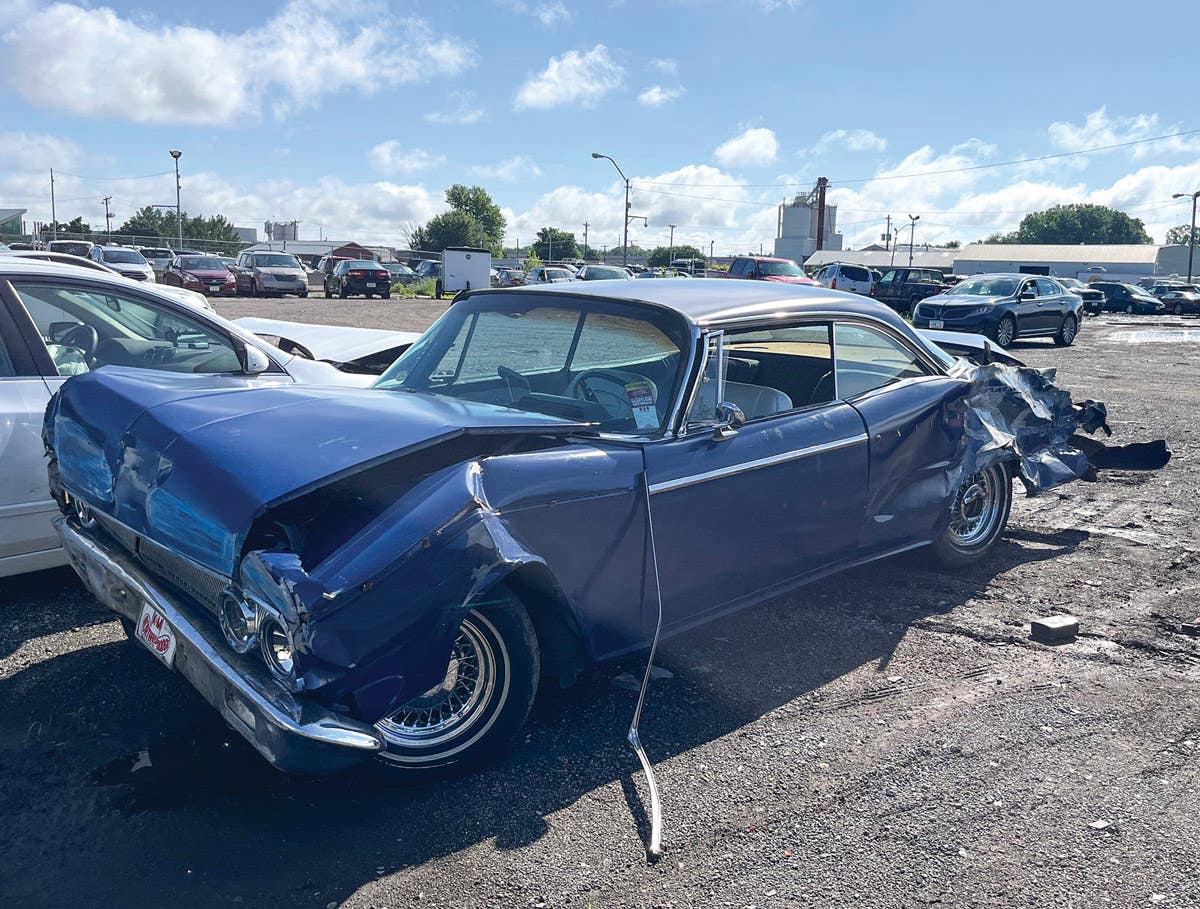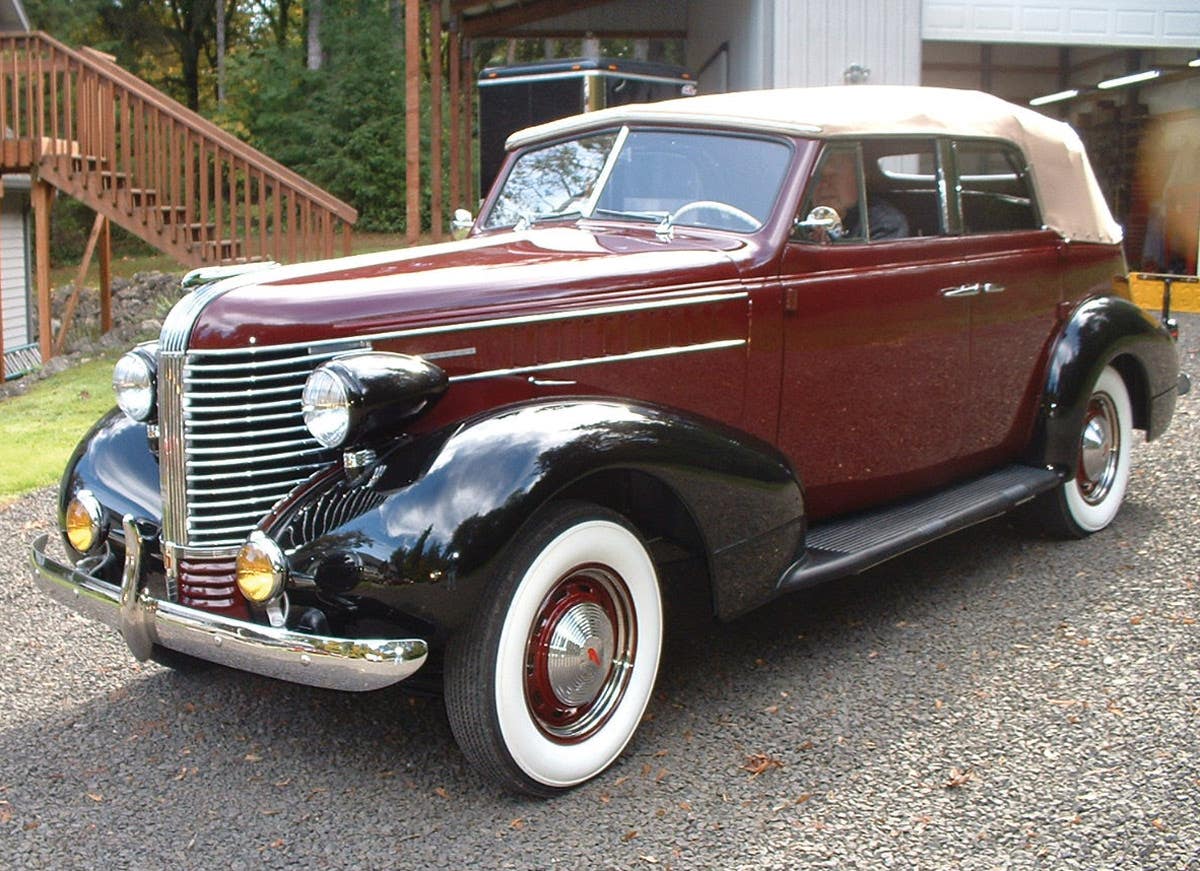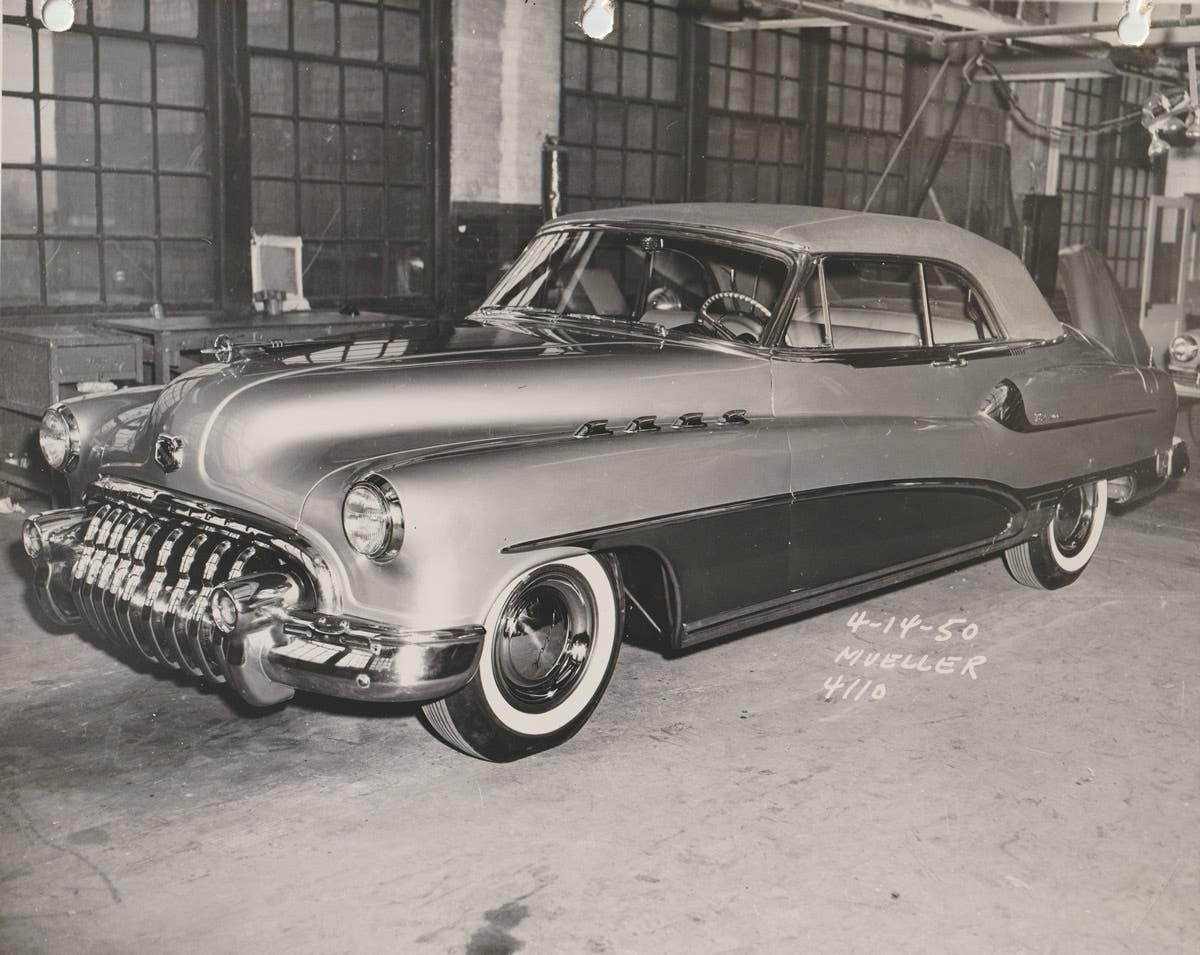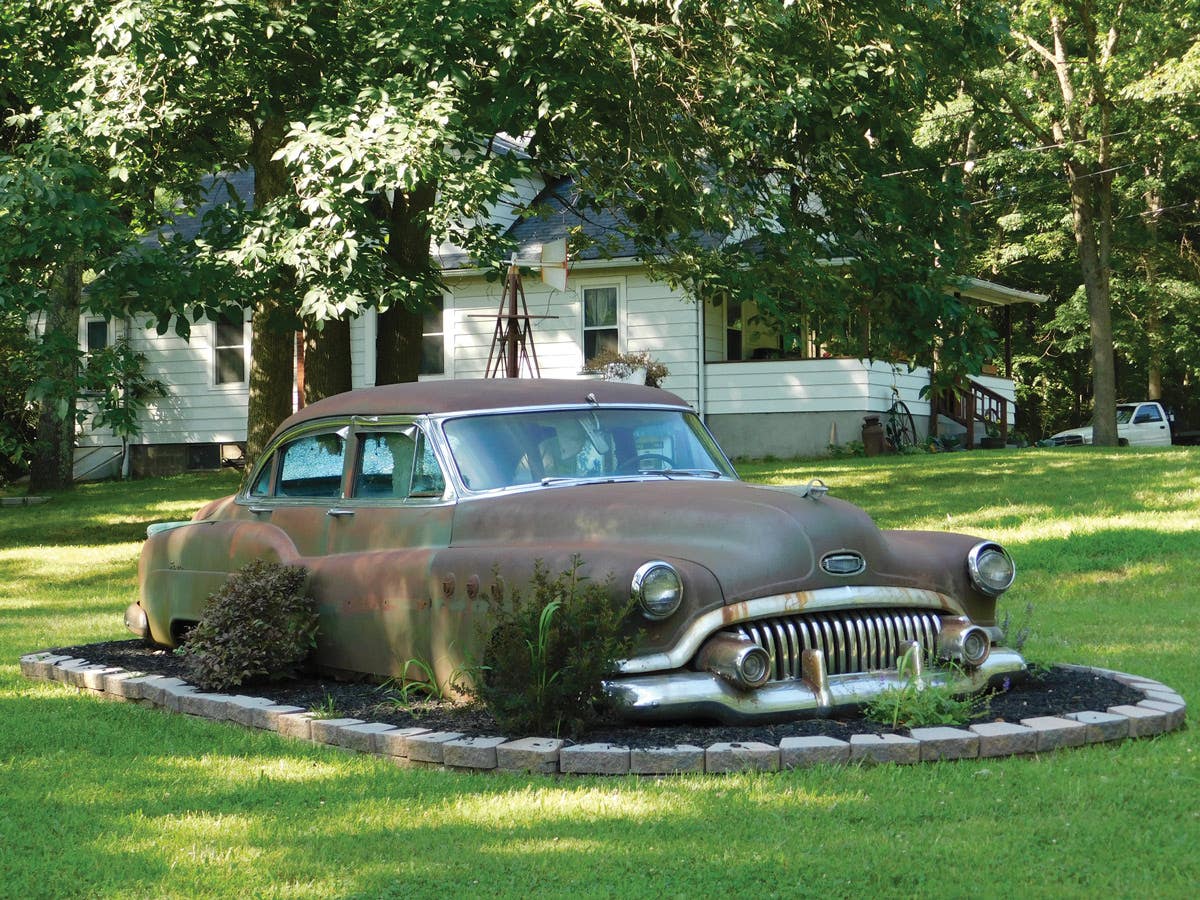Car of the Week: 1937 Packard 115 business coupe
Joe Cutler parted ways once with his beloved 1937 Packard. He doesn’t plan to do it again.
{EDITOR'S NOTE: This week's Car of the Week belongs to Joe Cutler, who wrote to us about life with, and without, his 1937 Packard 115-C business coupe.}
By Joe Cutler
Most of us, at one time or another, have experienced the pain associated with the loss of a close friend, relative or romantic interest. They say that time heals all wounds, but I don’t subscribe 100 percent to this old adage. There always seems to exist a lingering empty spot in our hearts that can persist for years, or even a lifetime.
Losing, or parting with, an old car we’ve become attached to can also be painful. Those outside the hobby who call us “eccentric” just because we assign human attributes to an inanimate object, like an old vehicle, just wouldn’t understand. It’s an “old car thing” we quickly point out to the uninitiated.
All too often, we never hear about or see our old “flame” again. However, on rare occasions, through fate, happenstance or a downright miracle, we become reunited with our long-lost object of affection. We might spot our “baby” at a cruise night, car show or actually end up re-acquiring our car.
Recently, I was extremely fortunate to experience the latter, as one of my “children” came back home after an absence of 20 years.
In 1969, I was a 20-year-old college student who had already been bitten by the “old car bug” three years previous when I paid $25 for my very first antique auto, a rough but complete 1934 Ford Tudor purchased from the original lady owner who was in her 90s.
Being a virtually penniless college student, I sought out any odd job I could find to support my “addiction.” I reveled in traversing the back roads of New Hampshire, peering intently into every yard, garage or barn, hoping to catch a glimpse of a derelict old car or truck.
I was all too successful in my quest. Friends joked that I could “smell an old car from a mile away,” which was partially true, as many of these abandoned conveyances had become homes to mice, squirrels and other critters over the years, and they really did stink!
Back then, before Lady Bird Johnson’s campaign to “beautify America” got into full swing, resulting in countless relics being relegated to the crusher, old cars seemed to be everywhere. Rarely did we pay more than $100 for a car, and many were in running, drivable condition. It sounds like yet another “old times tale,” but it’s true. Amongst numerous others, I recall buying a rock-solid 1953 Buick sedan ready to drive for a token $1, just to “make it a legal contract.”
My parents had a large field across from their house and I used it to great advantage. Before I realized it, I had 7 to 10 old cars lined up neatly in the field. I thought it was a grand sight, but my dad thought otherwise. One day, he returned home from work and scanned my collection with a definite look of disdain. Turning to me, he made the mistake of asking that rhetorical question: “What do you think this is, a used car lot?” Me, being the resident wise guy, seized the moment and quipped, “What does it look like?” That went over like the proverbial lead balloon.
An older guy who lived up the street and viewed my assemblage of old iron every day on his way to work had also succumbed to the viral “old car bug.” Within six months, he purchased about eight antique vehicles. Needless to say, we became very good friends quickly. He’d call me each time another one arrived, inviting me over to inspect his latest find.
One day, the now-familiar phone call came, and I dutifully drove the short distance to his house to view the newest addition to his “harem.”
As I entered the driveway, I instantly spotted “it,” sitting in regal pose on the front lawn: a seldom-seen (even back then) 1937 Packard 115-C business coupe. The two-passenger, three-window coupe was resplendent in a beautiful midnight blue lacquer. I jumped out of my car while it was still rolling and literally ran to check out this beauty. My eyes feasted on every minute detail of this magnificent machine, from its stately iconic grille to its handsomely styled smooth, flowing curves. It was love at first sight, and I vowed to own one just like it someday.
In 1992, while perusing classified ads and still dreaming about that sweet little coupe, I saw another for sale in Youngstown, Ohio. This Packard was an all-original, rust-free 1937 Packard 115-C business coupe with just 35,000 miles! Apparently it mattered little that I happened to be unemployed at the time, living hand to mouth, as I found myself, hands trembling, dialing the telephone number listed in the ad.
The car was still available, I was told, and after asking all the important questions, I told the owner I’d drive out to look at it. Cajoling a fellow old car nut to make the journey with me, we arrived later the next day at the appointed location. Salivating and heart beating wildly, I tried my best to affect a demure manner and exhibit a nonchalant demeanor as I inspected this awesome diamond in the rough.
The Packard’s original upholstery was in amazing condition considering its age, and the body was indeed rust-free. The Packard was wearing a very old repaint in the original Rich Loam Metallic color, but it had its share of battle scars on the rear fenders. There were dents in the rear fenders where previous owners had backed into various objects due to the massive blind rear quarters.
Putting on a poker face and feigning some semblance of composure, I proceeded to employ my “Yankee bargaining skills” in the hope of negotiating a lower price. The owner, undoubtedly sensing my affinity for this car, clung steadfastly to his asking price. Deciding to employ a different tactic, I then told him I’d think about it, and started walking away, waiting from him to exclaim, “Let’s talk about it some more.” Well, he didn’t. And after taking a dozen steps, I conceded defeat, did an about-face and sullenly returned to the car with my tail between my legs. Forcing a wry smile, I humbled myself and said to him, “You sure drive a hard bargain,” then pulled some money out of my wallet and left a deposit.
A week later, my newest prize arrived on an open car trailer. I was ecstatic, pulled it into the garage, and set to work right away rebuilding the brake system, draining the gas tank and ordering four brand-new wide whitewall tires. I decided to name the car “Herman,” as I thought the name had a distinguished sound.
I thoroughly enjoyed Herman for a year. He garnered lots of attention on the highway and at various cruise nights and shows. Most people had never seen one before. He was an absolute delight to drive, and I became more and more attached to him with every outing.
In 1993, as fate would have it, I located and purchased another rare auto — an all-original and unrestored one-owner 1949 Cadillac Club Coupe — yet another “love of my life.” Now I was in a real quandary! Not having ample room in my garage at that time for two cars, I made the heart-wrenching decision to part with Herman. It was a decision that haunted me for the next 20 years!
The very first guy who looked at Herman bought him on the spot. The man lived only a half hour from me, in Brooklyn, Conn., so I was somewhat consoled knowing that I’d probably still see Herman occasionally at cruise nights or local shows. A few days later, he came to pick up Herman. I’ll never forget the feeling of dejection, and fighting back a few tears as I watched my beloved Herman leave. I felt like a Benedict Arnold for having “betrayed” Herman.
Oddly, I didn’t hear about, or see, Herman for 12 years. Then, one day, a friend who owned a local garage called and told me he had just seen Herman for sale at large Connecticut swap meet. I learned that the man who bought the car had fallen on hard times and had never even registered Herman. Herman had been sitting idle in his barn for the past 12 years! I immediately called the new owner for details. He ran a used-car lot and dabbled in antique autos. He bought Herman with the sole purpose of reselling him.
I had a friend named Chuck who lived the next town from me. Chuck wanted to buy Herman in the worst way when I put the car up for sale in 1993, but didn’t have the funds. As luck, fate or destiny would have it, Chuck had recently escaped “Taxachusetts” and moved to Belen, N.M., and therefore now had the funds to buy Herman.
A deal was struck and Herman came back home, albeit temporarily, to wait for transport to his new home in New Mexico. I had a knot in my stomach as I watched my old friend leave me for the second time! The consolation now was that I knew Chuck loved the car as much as I did, and it would have the perfect home. Chuck vowed never to sell Herman. I had the opportunity to visit Chuck and he let me drive Herman along Route 66 in a joyous, if only fleeting, reunion.
Then, just before Thanksgiving 2012, I received an e-mail from Chuck that put me into a state of shock and unbridled elation. Chuck explained that his priorities had changed and he had decided to sell Herman. He was giving me first option on buying him back. Coincidentally, I had just completed construction of a large second garage and now had room for Herman. We quickly made a deal and I arranged transport. This little coupe had done more traveling in the past seven years than I had in my lifetime.
Like an expectant father, I paced the kitchen floor, waiting for the call from the transport driver that Herman had arrived. Within 15 minutes of driving Herman off the truck, I had plates on the car and was driving the back roads, beaming from ear to ear. Herman was home to stay.
Chuck had kept all of Herman’s paperwork and receipts in a large folder. I even found a copy of the original cashier’s check from 1992 when I first bought Herman! There was also a 1989 Ohio title, which inexplicably had not been retained by either the Massachusetts RMV or the New Mexico RMV. The owner’s name from Youngstown, Ohio, was on the title and a gentleman by the name of Graham Frank Forster of Farmdale, Ohio, was listed as “previous owner.”
On a whim, I composed and mailed a letter with a photo of Herman to Mr. Forster. In my letter, I detailed everything that had transpired over the past 20 years. Realizing that Mr. Forster, by now, had probably moved and/or was deceased, I held little hope of receiving a reply.
About a week later, my phone rang one night and I had yet another shock of a lifetime. It was none other than Mr. Forster himself. This whole thing was starting to get a bit spooky by now. Mr. Forster explained that he had indeed moved, but still lived in Farmdale. The person living at his former address, to which my letter was delivered, knew him and hand delivered the letter to him. He also had quite the shock when he opened it and saw a photo of Herman. Mr. Forster was now 73 years old.
Mr. Forster and I had quite the interesting chat. He remembered the car well, having owned it for many years back in the early 1970s. He, too, regretted selling the car, but rarely drove it and decided to part with it. He explained that he was the third owner and the second owner — one Blake Kennedy of Brookville, Pa. — had long since passed, but had purchased the car from the original owner, a lady who also lived in Brookville. She bought the car new from the local Packard dealership, T.F. Stewart in Brookville, Pa. Unfortunately, Mr. Forster didn’t know the name of the lady.
So, I’ve been very fortunate to have traced the ownership of this 75-year-old car back to the second owner and would like to know the name of that lady who purchased the car new in 1937. Does anyone out there know anything about Herman? If so, please contact me at 508-476-3490 or e-mail me at 49caddyman@gmail.com.
_____________________
If you’ve got an old car you love, we want to hear about it. E-mail us at oldcars@aimmedia.com
_____________________







